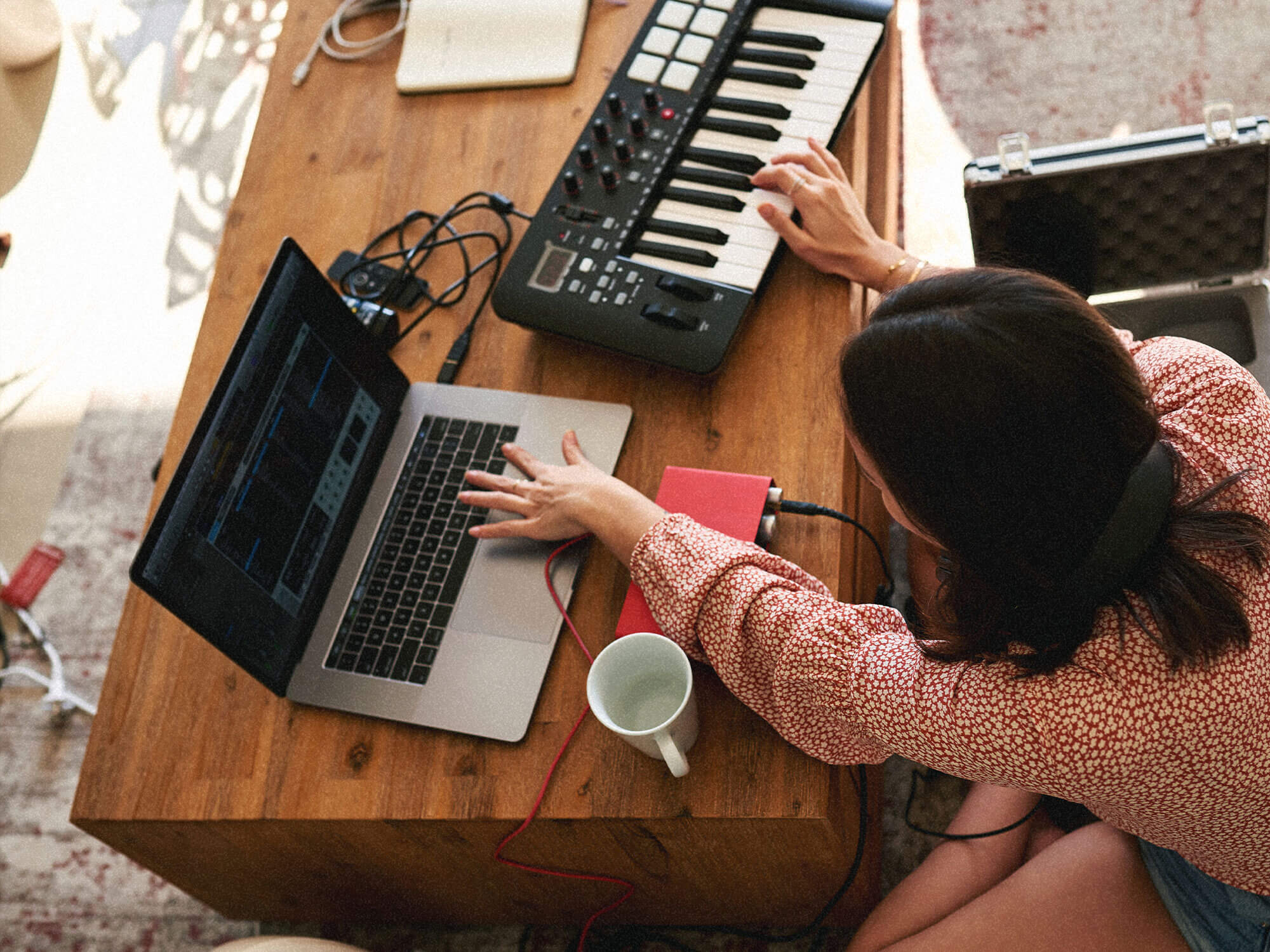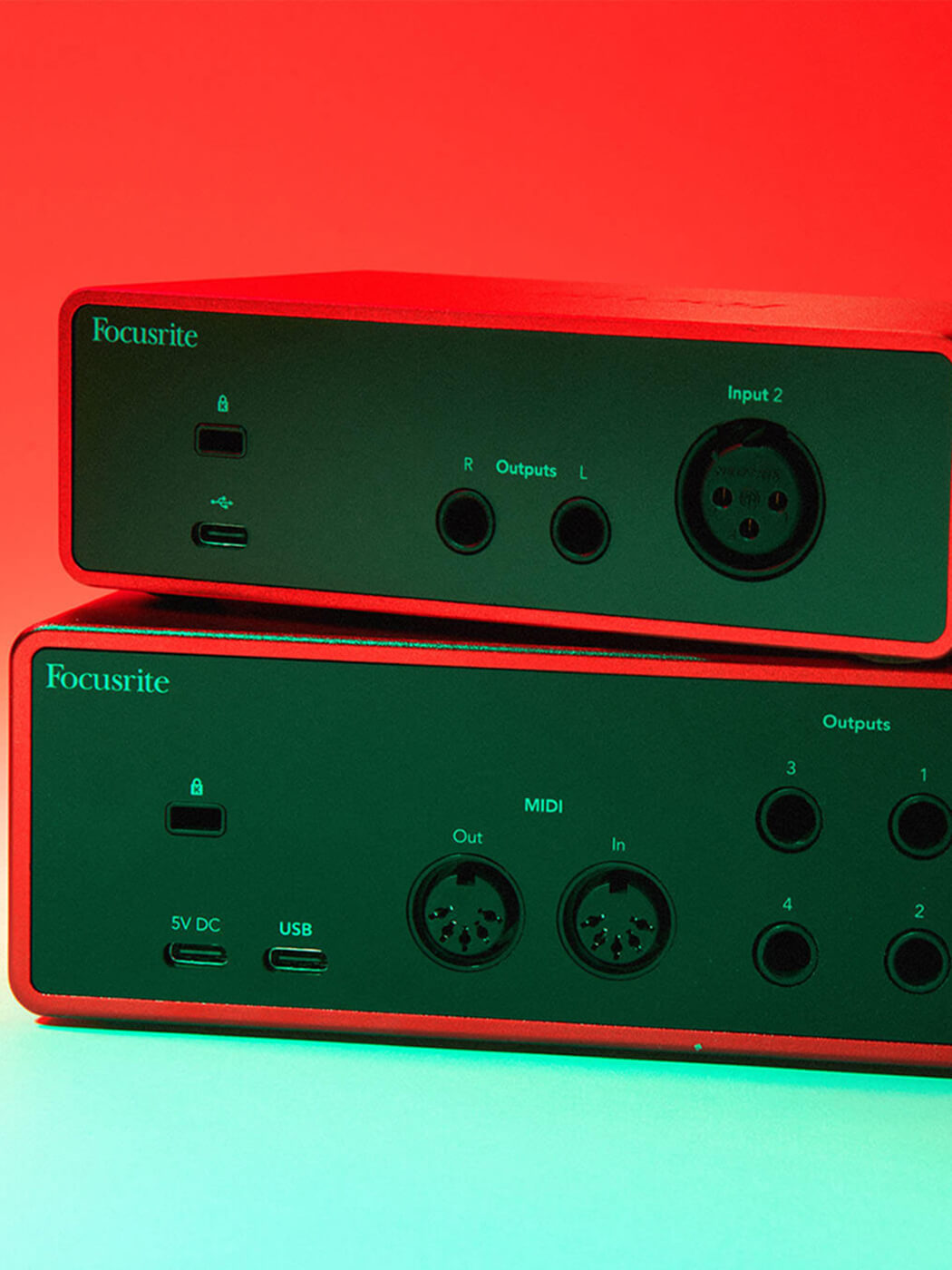
Beginner’s Guide: Everything you need to make your first beat
Got that loop in your head but nowhere to lay it down? Here’s all you need.
Image: Getty
Advertorial feature with Focusrite
There’s never been a better time to be a music-maker, thanks to top-quality studio gear available at super-accessible prices. With the right tools and a laptop, desktop or iPad, you can be making beats, recording audio and mixing pro-sounding tracks with minimal hassle. But what exactly do you need to make it happen? Our quick guide explains all and offers some insider tips on what to look out for when choosing your gear.
Audio interface
An audio interface will be a crucial part of your studio. It lets you send sound into and out of your computer at the highest possible quality. Your computer’s built-in soundcard simply can’t compete with a professional audio interface.

Connecting to your computer over a USB cable, audio interfaces contain digital-to-analogue converters that seamlessly manage the transfer of sound between the digital realm – your computer – and the analogue realm – your microphone, headphones or speakers.
When making your first beat, you may want to record some vocals, instruments, or vinyl samples, so your interface will need to have one or two audio inputs with high-quality preamps. You’ll find this much in Focusrite’s Scarlett Solo and 2i2 models. These also take the hassle out of setting recording levels with innovative Auto Gain and Clip Safe modes that mean you’ll never accidentally record too quiet or too loud.
An audio interface also lets you monitor on headphones, which is necessary when recording a live source like a vocal or acoustic guitar. Plus, you can connect monitor speakers so you can hear your recordings out loud in the room. Some interfaces, including Focusrite’s, work both with your computer and a recent USB-C-equipped iPad, letting you be even more mobile when you make your music.

A microphone
A studio condenser microphone is another vital piece of equipment for capturing professional-sounding recordings, like from a guitar or a singer.
Connected to your audio interface, a mic like Focusrite’s CM25 MkIII (included in the Scarlett Studio bundles) will pick up a strong and clean signal and let you lay down loops, licks and vocal lines for your tracks. Condenser microphones often require phantom power – a small electrical charge – to get up and running, so it’s well worth looking out for an audio interface that can supply this.
Headphones
While it’s fun to blast music at full volume, it’s not always practical to do so. A reliable pair of headphones, like Focusrite’s SH-450 (also included in the Scarlett Studio bundles), are comfortable for long periods of listening and also let you work on your music without disturbing the neighbours. And when you’re recording with a microphone, you’ll need to listen on headphones to avoid feedback from the existing tracks. A dedicated pair of studio headphones will do a better job of letting you hear the nuance in your music than an off-the-shelf pair.
Digital Audio Workstation
Of course, you’ll need somewhere to record your sound and edit those recordings. A Digital Audio Workstation (DAW) is an application that runs on your computer and does this and much more.
Ableton Live is a supremely popular DAW that runs on macOS and Windows and lets you create projects into which you can record and edit audio tracks and also software instruments to create backing parts. Naturally, you don’t just do everything in one take so there’s support for doing multiple takes, chopping up different parts and moving them around to create an arrangement, and layering different instruments together.
DAWs like Live and Pro Tools also contain software effects that can be used to add depth and interest to your sounds and tracks. Common types of effects to use include reverb, which creates a sense of space around parts like vocals or drums, delays which creatively add echo, and equalization which is used to balance all the different parts of your beat together to make sure they sound great as a whole.
A copy of Ableton Live Lite and a three-month trial to Pro Tools Artist are included when you buy a Focusrite Scarlett interface.
Software instruments
The beauty of modern music-making is that you can fit a whole studio’s worth of instruments into your computer with software instruments. These can be loaded onto tracks in your DAW and played with a MIDI keyboard or programmed using your DAW’s MIDI editor. In Focusrite’s Hitmaker Expansion bundle, you’ll find several cool virtual instruments you can use to build up backing parts for your loops and beats.
XLN’s Addictive Drums 2: Studio Rock Kit is a powerful and slick-sounding drum instrument based on hundreds of real drum samples; you can use this to create serious beats to back up your tracks.
Native Instruments Massive is a synthesizer plugin that covers everything from huge basses to searing leads among its 1,300 presets, and also lets you design your own sounds.
Meanwhile, XLN Audio’s Addictive Keys Studio Grand puts a beautiful concert grand piano at your fingertips. Use instruments like these to create rich and interesting backing parts without needing any extra musicians.
Effects processors
When you’ve recorded and programmed your various sounds, you’ll want to make sure they sound their best. To that end, Focusrite’s Hitmaker Expansion bundle comes with essential plugins for perfecting your vocal recordings.
Antares AutoTune Access is an industry-standard processor for auto-tuning vocals for perfect pitch, and ReLab’s LX480 is based on a legendary reverb unit, perfect for adding space and depth to vocal tracks. Guitarists will also enjoy Softube’s Marshall Silver Jubilee 2555 for adding authentic crunch to guitar recordings either during or post-recording.
Mixing tools
When you’ve recorded, edited and arranged your track in your DAW, you’ll then want to mix it using specialised plugins to sweeten and balance everything to prime it for release. This doesn’t have to be complex, and advanced tools like the FAST Balancer can help streamline the mixing process.
Plugins such as the Bx_console Focusrite SC and Red 2 & 3 Plugin Suite will also help you ensure your final mix and master sounds smooth and ready for release. And if you need an extra hand, every Scarlett includes five free masters from LANDR to help give your songs a professional, polished sheen.
So there you have it – with the right core hardware and software tools, you can be making pro-sounding music in just a short time. And why should it be complicated?
Learn more at focusrite.com